MYITKYINA, MYANMAR - As the twin-engine turboprop bumps onto the narrow tarmac of the Myitkyina airport, I am acutely aware I have entrusted my safety to a man I hardly know. Acting on raw instinct, I have accepted an exclusive invitation to meet a rebel army in Myanmar’s far north.
The city is in Kachin State, at the foothills of the Himalayas in the country better known as Burma. At the time it is the farthest a foreigner can visit without the military-backed government’s permission. It is also the most remote place I have ever travelled.
I have lied to the Myanmar embassy to get my entry visa, so I keep up the ruse when I’m greeted by three military officers with betel-stained grins.
“I hear it is very beautiful here,” I croon to the gatekeepers. “I’m an English teacher visiting from Japan!”
They smile at my blonde hair and traditional sarong, called a longyi, so I feign confidence and blow past onto the muddy road outside. But unlike most Southeast Asian tourist destinations, I discover nary a tuk-tuk in sight. I plead with the universe, “Please let him meet me … ”
* * *
One week earlier, I’m the only woman in the Yangon steakhouse when my new buddy lobs a cool welcome: “I heard you were kidnapped last month?”
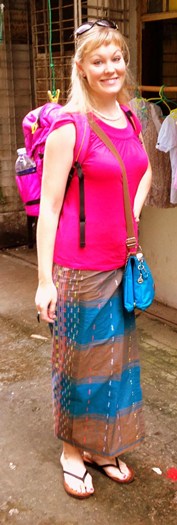
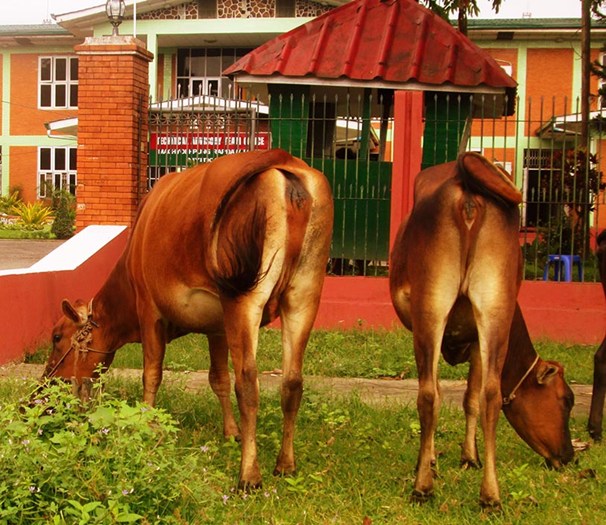
Left: Our writer dresses like a local. Right: Cows graze outside the headquarters of the rebel leader's headquarters.
The newcomer sits. We down a bottle of red wine before he reveals himself an international news videographer, a daredevil regularly scaling 900-foot mountains to embed with a rebel army. His name is John Sanlin and his weapon of choice is the camera. The soldiers he records fire Kalashnikovs out of necessity, defending their ethnic minority from the ruling junta.
Sanlin plays coy that first night. He deflects inquisition about forehead scars with comedic yarns — tricking a corrupt minister into gifting him a chunky gold ring studded with rubies and sapphires. By our third round of whiskey and shisha, my persistence triggers his offer. “Come with me to war-torn territory. I’ll show you how it’s done.”
I spend the next two days atop the Sakura Tower, the capital’s tallest building, mooning over wispy pink-and-orange sunsets and grilling Sanlin on his journalism chops, integrity and life story. He uses spotty Wi-Fi to stream cloak-and-dagger footage of his exploits. That’s him, sneaking a CNN correspondent through restricted areas during Cyclone Nargis in 2008. Him again, nabbing surreptitious shots for the World Wildlife Fund of poachers in the jungle. He confesses a reputation for dangerous stunts. “I’m not afraid to die,” he says. So the last thing I do, before agreeing to meet up with him in Kachin state, is to ask him point-blank: “Why are you inviting me?”
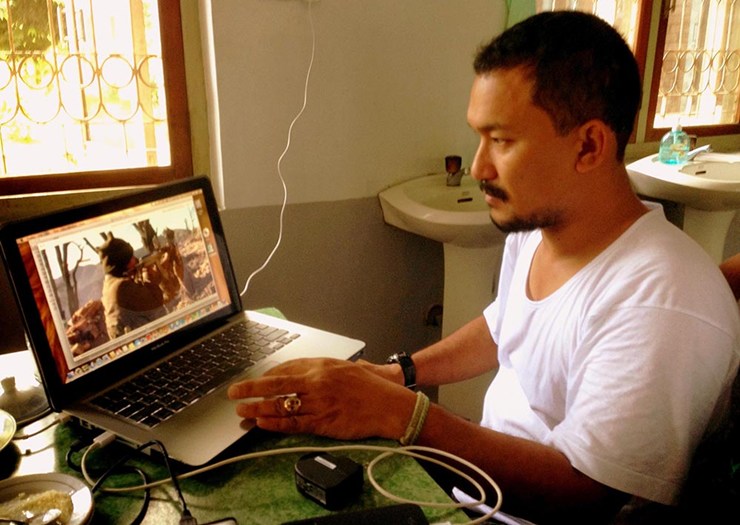
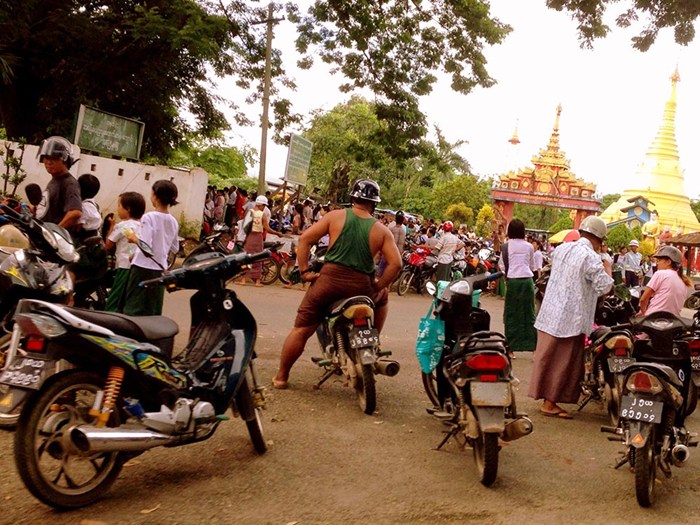
Left: Sanlin the rebel leader. Right: People come to the compound to show their support.
* * *
I’ve only sent a sketchy Facebook message to confirm I’m making the 1,500-kilometre flight when I touch down in rebel territory. But Sanlin is right where he promised, whisking me into a jeep with a cracked windshield. He breezily introduces me to a woman belted in the front seat who speaks no English, named Kabul – “like Afghanistan.” I eventually figure out she’s his wife.
He tosses me a juicy rambutan fruit and we roll out, driving past ramshackle shops, a fleet of trucks overflowing with schoolchildren, and camouflage military vehicles. He settles the three of us in at a freshly painted guesthouse and then refuses to let me pay for any meals, zipping us to a roadside stall serving ethnic Shan food. For the equivalent of 80 cents I dine on stewed okra, chickpeas and fresh fish from the Irrawaddy River, a spectacular blue-green ribbon that gushes under fishermen on their pirogues. I’m impressed by a golden pagoda encasing an opulent reclining Buddha, until I learn it’s a symbol of oppression. The majority Buddhist government has burned down and replaced churches built by the minority Kachin populace, who are almost all Christians.
The cock crows outside my window the next morning and we begin a whirlwind of meetings. Sanlin chauffeurs me throughout the city, switching between tour guide and personal monologist. I meet the local police chief, who regales me with details of an opium sting; another tale about a 25-year-old farmer and father of three, beaten by the military into falsely confessing a bomb plot; and the story of a young activist who was imprisoned for sneaking human rights documentaries through a military checkpoint.
I wonder if Sanlin is putting himself in danger. The government’s military — and their guns — are omnipresent. Sanlin wordlessly swaps his personal jeep one day for another with tinted windows.
At last I am delivered to the gated rebel compound, where strategists for the Kachin Independence Army meet. Their office stands secure but in plain view, constructed to fulfill the terms of a tenuous cessation of hostilities. The army exists solely to fight the regime, which the United Nations says has committed widespread human rights abuses. The rebels want freedom for their people in the form of self-governance.
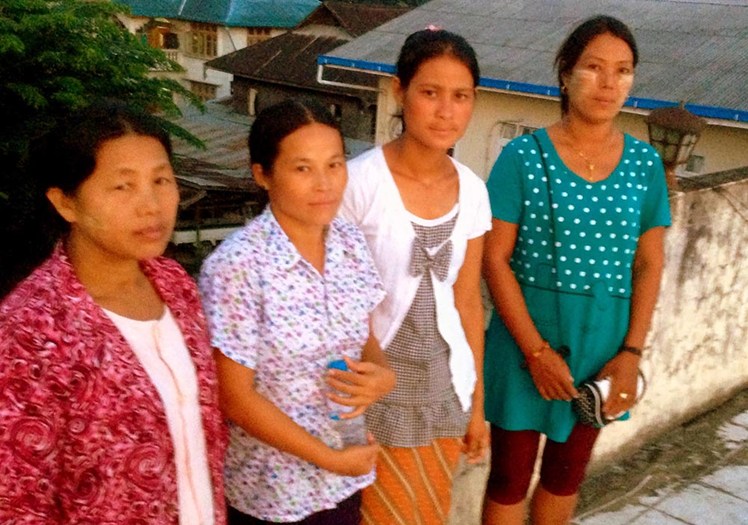
Above: Women are the fabric that holds the rebel camp together.
I heed Sanlin’s instructions, but sometimes still make blunders. I’m urgently called back after sauntering outside the security fences to snap a photograph with cows grazing in the foreground. “We don’t want people to see you!” (I click the shutter once and secretly applaud myself, until I see I’ve caught the animals’ tails up and mooning me – too lewd for a news publication.)
Sanlin says nothing. He has his own agenda, requesting I consider rounding up foreign volunteers for “an adventure,” an all-expenses paid expedition back to educate local Kachin adults. For one of the most impoverished countries in Asia, it’s do-it-yourself empowerment.
My interviews with the army’s advisors stretch late into the night at a picnic table beside the riverbank, and we reconvene over breakfasts of roti and chickpeas. When I bid them farewell, Lt. Col. Gawlu La Awng responds, “See you in another life.”
* * *
It’s the final day of my visit, and for the first time Sanlin and I exchange no words as he drives me back to the airport. I quietly position my video camera toward the jeep’s back window, capturing final impressions. I mostly want rare footage of the forbidding military base, documenting the apparatus of state oppression to share with the outside world.
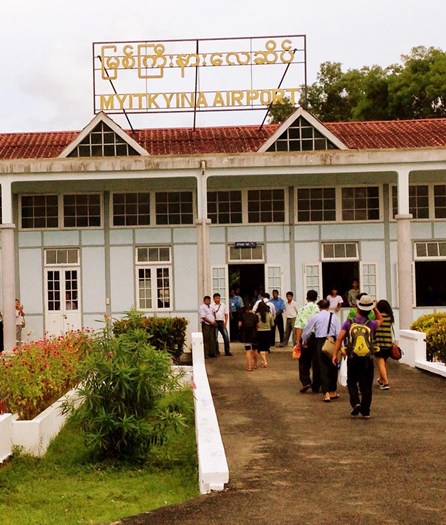
Above: The remote airport where our writer landed.
Sanlin breaks the silence: “Don’t video the military!” I guiltily slam the device into my lap, missing the coveted shot. I’m struck that he knew I was secretly filming the whole ride. It dawns on me that had I been seen, the military would have taken it up with him and not me. Right until our final parting, Sanlin did whatever he could to create opportunity for me at his own risk.
My mind flicks back to the 20th floor of the Sakura Tower in Yangon. Sanlin’s tough exterior. The sunsets he helped me photograph. “Why are you inviting me?” I ask him. Sanlin looks me straight in the eyes: “I always champion the underdog,” he replies. “Hear their words.”
About the Author
Tamsyn Burgmann is a career chronicler of other people’s lives. But a twist in the reporter’s plot catapulted her into a whirlwind solo journey through 12 Asian countries over nine months. She rode motorbikes with Muay Thai fighters, ingratiated herself with rebels in Burma and was body painted for a travel exhibition in Manila. Burgmann discovered she had her own story to write. She has since gone diving with sharks off Micronesia’s Palau and gained the trust of a Beirut artist who secretly paints humorous characters on bombed out buildings. She is indebted to folks across the globe who have courageously shared their worlds and, in turn, ignited hers.